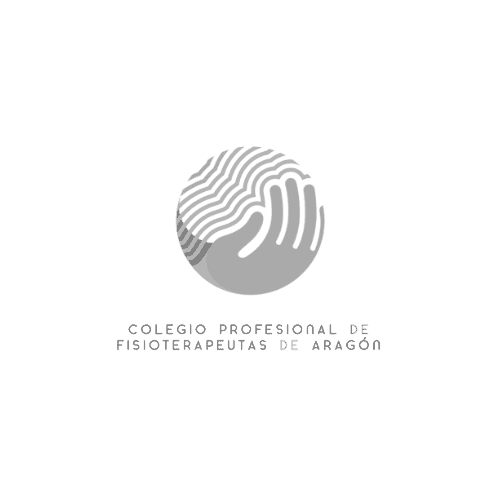Today we have a guest blog by Claire Robertson, physiotherapist, researcher and international professor, who very kindly accepted to collaborate with us writing a blog post about patellofemoral pain. You can read more about her on her site. Many thanks, Claire!
This article is a summary of a recent talk I gave at the BASEM, (Bristish Association of Sports and Exercise Medicine) annual conference. This talk draws on my work as a consultant physiotherapist solely in the patellofemoral pain (PFP) field for the last ten years, the literature body including my own research, and my recent attendance at the Patellofemoral Research Retreat.
Firstly, a little clarification regarding terminology. I advise against using, ‘anterior knee pain’ for PFP as it is vague and doesn’t differentiate with other anteriorly located pathologies such as tendinopathy and Osgood-Schlatters. I also urged caution with the term chondromalacia patellae. This is a descriptive term only to be used after MRI or arthroscopy, describing the state of the retropatella cartilage. I did however point out that cartilage is aneural so isn’t in fact the source of pain. Catastrophic beliefs can arise from this label, so my advice is to avoid using it.
I reminded the audience of the fact that local, regional and CNS factors can all play a part in PFP, particularly when the duration of symptoms has been a while. The pain and movement reasoning model as presented by Jones and O’Shaughnessy, (2014) is a great way of looking at these three factors. One of my own areas of work has looked at the meaning of crepitus to patients with a normal MRI. It is my belief that patients are often very concerned about their crepitus, (Robertson, 2016), and my recent work, (awaiting publication) demonstrates fear-avoidant behaviour based on catastrophic beliefs about what the noise means. My advice if patients mention crepitus I to simply ask, ‘what do you think it means?’ If they say something like, ‘my knee is wearing away’, then time needs to be spent correcting that belief.
My other key area of research is the vmo. The vmo has had a lot of attention over the years, with confusion as to its relevance in PFP. Our team has been looking at the vmo architecture with respect to the fibre angle and amount inserted onto the patella. We have found that the vmo architecture varies a lot in the normal population, that sedentary individuals are likely to have a smaller fibre angle and insertion ratio, and that exercise can increase these parameters, especially the fibre angle, (Engelina et al., 2014, Benjafield et al., 2015, Khooshkhoo et al., 2016). My own experience tells me that when there has been a strong history of pain and or swelling at the start of the symptoms, e.g. post surgery, post trauma, post dislocation, then the gross inhibition of the vmo is more likely to be relevant.
The vmo is also increasingly important when the passive stability of the PFJ is compromised from dysplasia. The advent of improved MRI’s over the last decade means that we understand dysplasia better, and measurement of PFJ dysplastic features are now more commonplace. In the PFJ dysplasia can present as one or all of the following; shallow trochlea, long patella tendon, lateralized tibial tuberosity. At the patellofemoral research retreat, 2015 there was discussion around PFP being on a continuum with PFJ OA, and this is probably more likely when dysplastic features are present. Rehabilitation should consider dysplastic features, and aim to provide maximum dynamic stability, and remove all unwanted movement. This unwanted movement may be trunk, pelvis, femur, tibia or foot and in varying planes. Good assessment needs to identify this so that it can be targeted.
When the patella is tilted or subluxes laterally it is common to see bone oedema on the lateral facet of the patella and/or the corresponding part of the trochlea. Callaghan et al., (2015) demonstrated that use of a Q brace for a mean of 7.4 hours per day for 6 weeks brought about a corresponding decrease in bone marrow lesions as shown on MRI and a correlating reduction in pain. Some legs just don’t suit braces so in those situations I would look to replicate the effect with tape.
Finally there has been an explosion of interest around running and the PFJ although surprisingly few papers on painful subjects. However what we do know is that reducing step length by increasing step rate can reduce the PFJ load, reduce peak adduction angle, decrease the work on the abductors and external rotators and encourage better gluteus medius firing prior to heel strike. All of these can be viewed as potentially beneficial in PFP, (Lenhart et al., 2013).
Of course there are many other areas of interest in this field. It is imperative to view PFP as an umbrella term, (Robertson, 2013), and use clinical reasoning underpinned by evidence to assess and manage the patient.
Click here to see the infographic summarising this blog post.
References
Benjafield A.J., Killingback A.,Robertson C.J. Adds P.J. Investigation into the architecture of the vastus medialis oblique muscle in athletic and sedentary individuals: An in vivo ultrasound study Clinical Anatomy. Article first published online: 22 SEP 2014 | DOI: 10.1002/ca.22457
Callaghan M. et al., A randomised trial of a brace for patellofemoral osteoarthritis targeting knee pain and bone marrow lesions. Ann Rhuem Dis 2015 doi:10.1136/annrheumdis-2014-206376
Engelina S, AntoniosT Robertson C.J., Killingback A, Adds P J Ultrasound Investigation Of Vastus Medialis Oblique (VMO) Muscle Architecture: An In Vivo study. Clin Anat. 2014;27;7;1076-1084
Jones LJ, O’Shaughnessy DFP The Pain and Movement Reasoning Model: Introduction to a simple tool for integrated pain assessment Manual Ther 2014, 19; 3; 270-76
Khoshkhoo M, Killingback A, Robertson CJ, Adds PJ The effect of exercise on vastus medialis oblique muscle architecture: An ultrasound investigation. Clin Anat 2016; 29;6;692
Lenhart RL, Thelen DG, Wille CM, Chumanov ES, Heiderscheit BC. Increasing Running Step Rate Reduces Patellofemoral Joint Forces. Med Sci Sports Exerc. 2013 Aug 2.
Robertson C J. Joint Crepitus-are we failing our patients? Physiotherapy research International; 2010;15;185.
Robertson C J. Patellofemoral pain syndrome provides a challenge for evdence-based practice Int J Ther Rehab 2007;14;12
Spanish version







